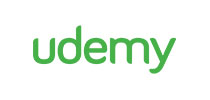1 -Section Introduction
2 -Ingestion to Lakehouse status
3 -Spark in Microsoft Fabric
4 -Spark pools in Microsoft Fabric
5 -Spark pool node size
6 -Customizing Starter pools
7 -Creating a custom pool in Workspace
8 -Standard vs High Concurrency Sessions
9 -Changing Spark Settings to StarterPool
10 -Understanding Notebooks UI
11 -Fabric Notebook basics
11 -notebook basics.zip
12 -MSSparkUtils - Intro
13 -MSSparkUtils - FS- Mount
13 -fs - mounts.zip
14 -MSSparkUtils - FS - Other utils
14 -fs - other utils.zip
15 -MSSparkUtils - FS - FastCp
15 -fs- fastcp.zip
16 -Creating Folders in Microsoft Fabric
17 -MSSparkUtils - Notebook Utils - Run exit
17 -notebook uitls - parent.zip
17 -notebook utils- child.zip
17 -notebook utils- child parameter.zip
18 -MSSparkUtils - Notebook - RunMultiple
18 -notebook utils - runmultiple.zip
19 -Access ADLS data to Lakehouse - Intro
20 -Access ADLS using Entra ID
20 -adls ingest - entra id.zip
21 -Access ADLS using Service principal
21 -adls access - sp.zip
22 -Access ADLS using SP with keyvault
22 -adls access - sp with kv.zip
23 -Call Fabric notebook from Fabric pipeline
24 -Managed vs External table - Intro
25 -Create a Managed Table
25 -managed table.zip
26 -Create an External Table
26 -external table.zip
27 -Shortcut Table is an external or managed table
28 -Data Wrangler in Fabric Notebook
29 -Environments in Microsoft Fabric
30 -Understanding V-order optimization
30 -v-order.zip
31 -Spark Job Definition
31 -notebook vs spark job definition.zip
31 -sparkjob.zip
32 -What is a data mesh
33 -Creating domains in Fabric

